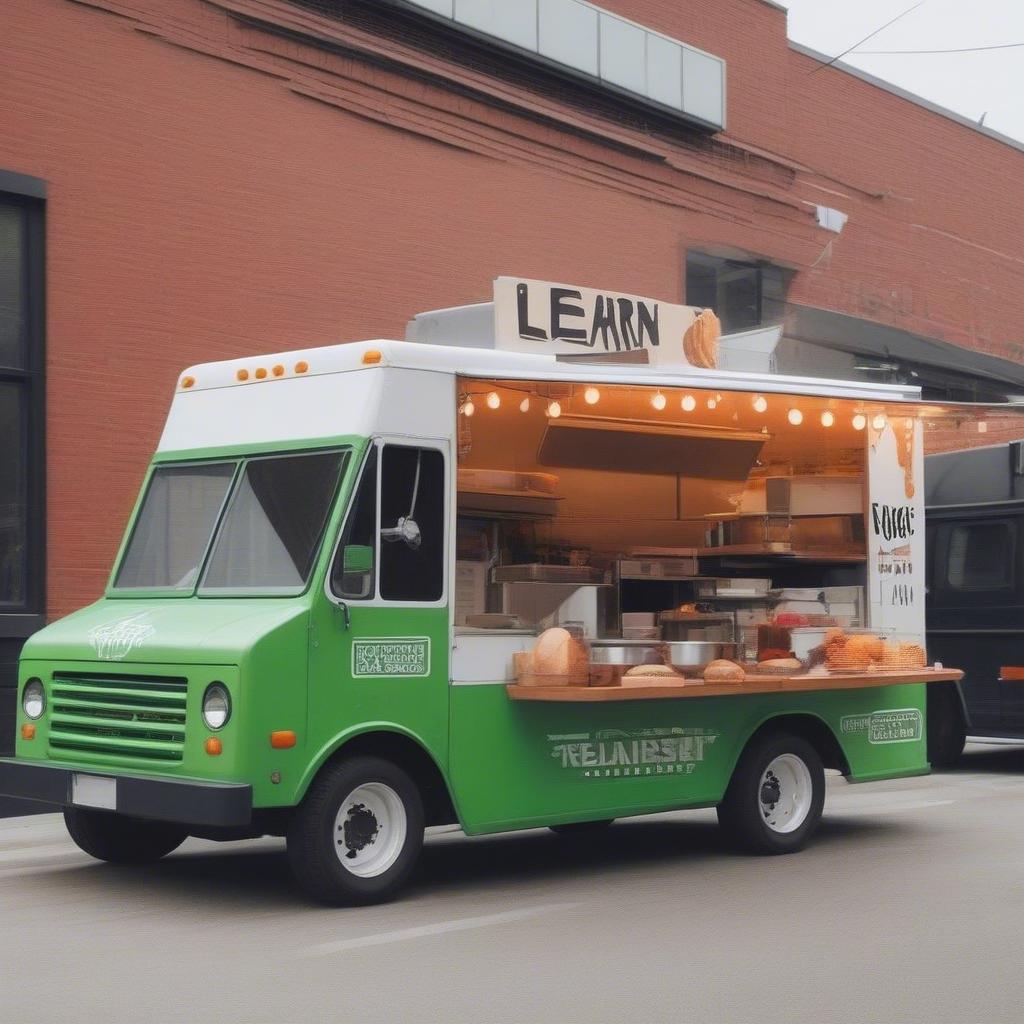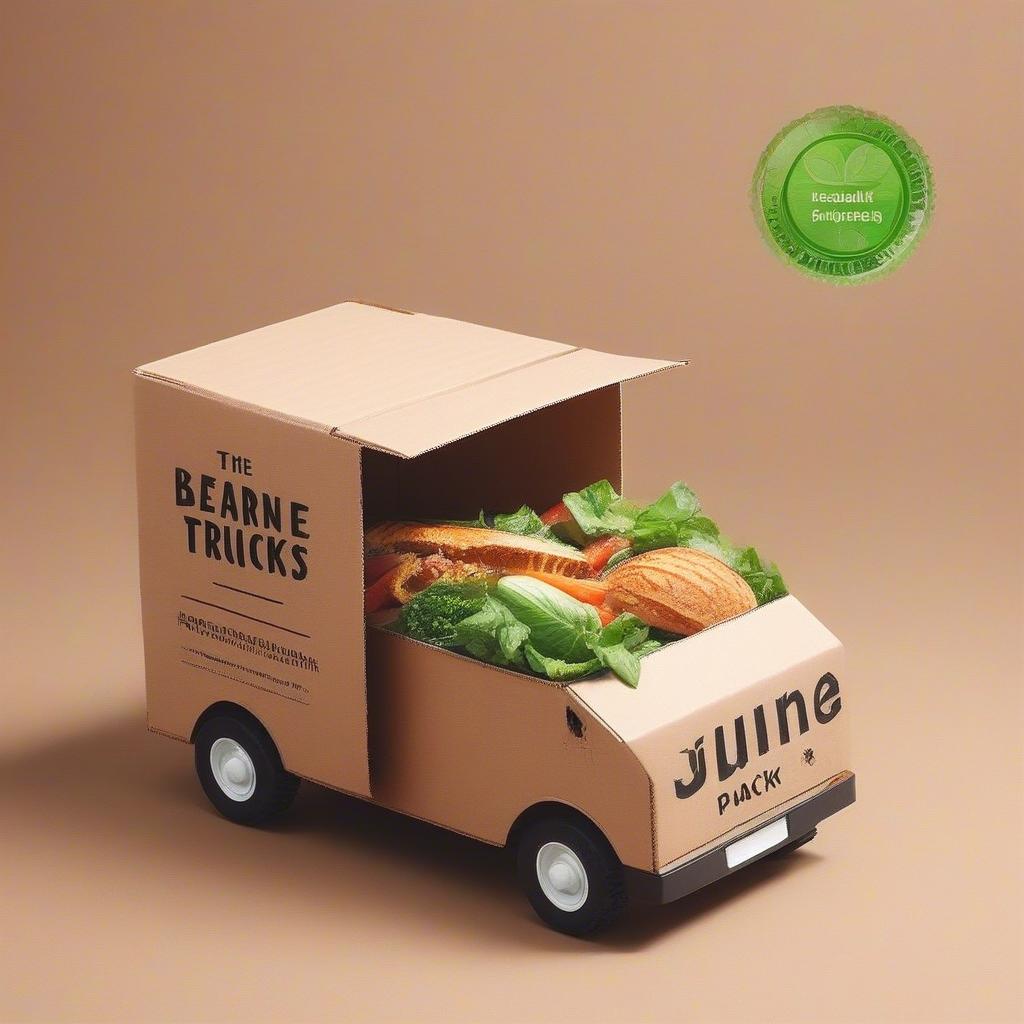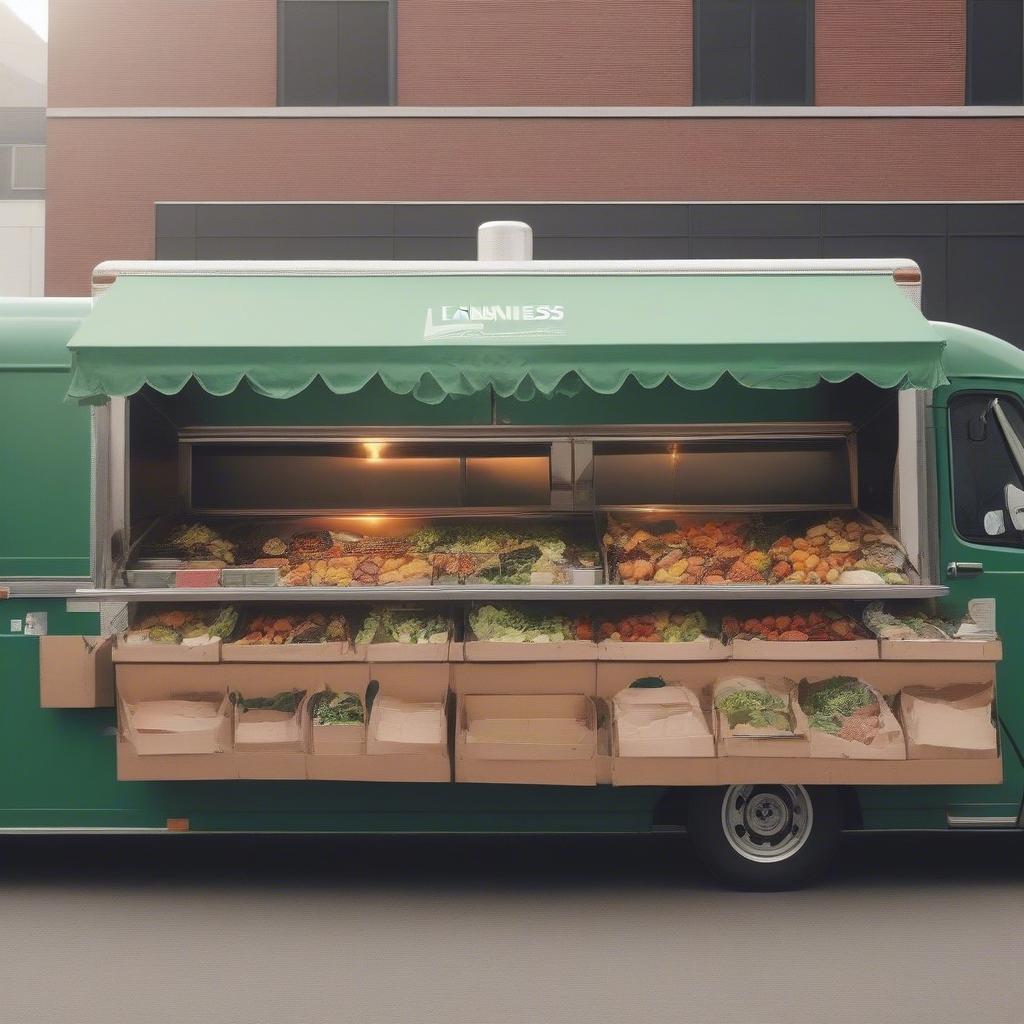
Okay, you’ve got a killer food truck, serving up culinary masterpieces on wheels. But is anyone actually finding you? That’s where the magic of local SEO comes in. It’s not just about ranking high on Google; it’s about making sure hungry customers near you can easily discover your delicious offerings. This guide will walk you through how to use local SEO to attract more food truck customers and boost your online presence.
Why Local SEO Matters for Your Food Truck
Let’s face it, your food truck isn’t a restaurant with a fixed address. You’re mobile, often popping up in different locations. This dynamism makes local SEO absolutely crucial.
What is Local SEO?
Essentially, local SEO is about optimizing your online presence so that your business appears in local search results when someone searches for a “food truck near me” or “best tacos in [your city]”. It’s about making sure your business information is accurate and visible to people who are actively looking for what you offer, right in your geographical area.
Why is it Important for Food Trucks?
Think about it: people aren’t going to drive across town just on a whim to try your food. They’re searching for options that are close, convenient, and, of course, tasty. Here’s why local SEO is your secret weapon:
- Increased Visibility: Local SEO puts your food truck in front of potential food truck customers who are actively looking for food options in your vicinity.
- Attract Nearby Customers: People searching for “food trucks near me” are ready to buy. By appearing in these results, you’re targeting the right audience at the right time.
- Build Brand Awareness: As your food truck becomes more visible in local searches, people will start to recognize and remember your brand.
- Compete With Other Food Trucks: In a crowded market, local SEO helps you stand out from other food trucks that might not be actively focusing on their online presence.
- Drive More Business: Ultimately, local SEO translates to more customers visiting your truck, leading to higher sales and growth.
Setting Up Your Local SEO Foundation
Before diving into the nitty-gritty, let’s make sure your foundation is solid. This involves setting up essential online profiles and ensuring your information is consistent across the web.
Google My Business (GMB) – Your Local SEO Hub
Your Google My Business (GMB) profile is the cornerstone of your local SEO strategy. It’s like your digital storefront and needs to be perfect.
Creating and Optimizing your GMB Profile:
- Claim Your Listing: If you haven’t already, claim your listing on Google My Business.
- Complete Profile Information: Fill in every section thoroughly. This includes your:
- Business Name: Use your official business name.
- Address: Since you are a mobile business, list your service area instead of a fixed location (e.g. “Serving the Downtown Area of [city]”) you can list the physical location of your main base like kitchen, commissary etc.
- Phone Number: Use a local number to instill confidence.
- Website: If you have one, add it. If not, work on getting one.
- Category: Select the most relevant category for your food truck (e.g., “Food Truck,” “Taco Truck,” “Burger Joint”).
- Hours of Operation: Specify the days and times you are generally operating. Add specific daily timings if they vary.
- Description: Write an engaging description that highlights your unique selling points and the cuisine you offer.
- Photos & Videos: Add high-quality photos of your truck, your food, and your team. Upload videos showcasing your truck in action, the preparation process, and customer testimonials.
- Regular Updates: Update your GMB profile regularly, especially for seasonal menu changes, special events, and new locations.
- Encourage Reviews: Actively encourage satisfied food truck customers to leave reviews on your GMB profile. Responding to reviews also shows customers that you care.
Other Important Local Business Directories
While GMB is essential, don’t forget about other important local business directories.
Key Directories to List On:
- Yelp: A widely used review site.
- Facebook: Create a business page and include your hours, location, and menu.
- Foursquare: Great for location-based discovery.
- TripAdvisor: Particularly useful if you get tourists visiting your city.
- Industry-Specific Directories: See if there are food truck-specific directories in your city or region.
Maintaining Consistency Across All Directories:
- NAP Consistency: Ensure your Name, Address, and Phone number (NAP) are exactly the same across every directory. Even minor differences can confuse search engines.
- Use the Same Business Description: Maintain a consistent tone and key messages when writing your descriptions.
- Keep Information Up-to-Date: If you change your location, menu, or operating hours, update all your directories.
Optimizing Your Online Presence for Local Search
Now that your foundation is set, let’s focus on optimizing your online presence to rank higher in local search results.
Local Keyword Research
Keywords are the search terms people use when looking for information online. You need to know which keywords your potential food truck customers are using.
Identifying Relevant Keywords for Your Food Truck:
- Start Broad: Brainstorm general terms like “food truck,” “mobile food,” “street food”.
- Add Your Niche: Include specific food types like “taco truck,” “burger food truck,” “bbq food truck.”
- Use Location Modifiers: Add your city or neighborhood names, like “food truck in [city],” “best tacos in [neighborhood].”
- Consider Long-Tail Keywords: These are more specific and often have less competition. Example: “vegan burger food truck near downtown.”
- Utilize Keyword Research Tools: Use tools like Google Keyword Planner, Ahrefs, Semrush, or Moz Keyword Explorer to identify relevant and high-volume keywords.
Where to Use Your Keywords:
- Google My Business Profile: Incorporate keywords naturally into your business description, menu descriptions, and posts.
- Website Content: Use keywords in your page titles, headings, and body text.
- Social Media Posts: Add relevant keywords to your captions and posts.
- Online Directory Descriptions: Use keywords in directory listings, remembering to keep the information natural.
Content Marketing for Local SEO
Content marketing is a powerful way to attract food truck customers and boost your online presence. It’s about creating valuable, engaging content that appeals to your target audience.
Content Ideas:
- Blog Posts:
- “Top 5 Reasons to Try Our Gourmet Burgers This Weekend”
- “How We Source the Freshest Ingredients for Our Tacos”
- “Meet the Team Behind [Your Food Truck Name]”
- “A Guide to [Your City]’s Best Street Food Spots”
- Social Media Updates:
- Announce your daily or weekly locations.
- Share photos and videos of your food.
- Run contests and promotions.
- Post customer testimonials.
- Create short, engaging videos showing off your process and food.
- Location Announcements: Update your followers on your weekly schedule so they know where to find you.
- Seasonal Menus: Highlight new seasonal items on your menu to engage customers with fresh items.
Content Optimization Best Practices:
- Use Keywords: Use your targeted keywords naturally within your content.
- High-Quality Content: Make sure your content is engaging, informative, and visually appealing.
- Call to Actions: Include clear call to actions like “Visit us today” or “Find our truck this week”.
- Share Content Regularly: Be consistent with your content posting schedule to keep your audience engaged.
Local Link Building
Local link building is about getting other local websites to link to your website or online profiles.
How to Build Local Links:
- Local Business Associations: Check with your local chambers of commerce and business associations.
- Local Food Blogs: Reach out to local food bloggers and ask them to review your food truck.
- Sponsor Local Events: Supporting local events can get your brand out there and get you link mentions.
- Guest Blog Posts: Write guest posts for relevant local websites.
- Partnerships: Partner with other local businesses and share links on each other’s websites or social pages.
- Local News Outlets: Try to get featured on local news outlets, offering them interesting stories or experiences.
Why are Links Important?
Links from reputable local websites signal to Google that your business is a legitimate local presence, improving your local search rankings.
On-Page SEO Optimization for Your Website (if you have one)
If you have a website, it is crucial to optimize it for local SEO.
Key On-Page SEO Elements:
- Title Tags: Include your main keywords and location in your title tags.
- Meta Descriptions: Write concise and engaging meta descriptions that highlight your unique selling points.
- Header Tags (H1, H2, H3): Use header tags to structure your content and incorporate relevant keywords.
- Image Optimization: Use descriptive alt tags for your images, including relevant keywords.
- Location Pages: Create a dedicated page for each area you serve.
- Mobile Friendliness: Make sure your website is mobile-friendly since most searches will be done on mobile phones.
- Website Loading Speed: Optimize your site’s load time; people don’t wait around for slow sites.
Leveraging Social Media for Local SEO
Social media is a fantastic tool to connect with potential food truck customers on a local level.
Social Media Strategies:
- Choose the Right Platforms: Focus on platforms where your audience is most active (Instagram, Facebook, Twitter).
- Share Location Details: Post your location and hours daily or weekly.
- Engage with Followers: Interact with comments, answer questions, and participate in conversations.
- Run Local Ads: Use social media ads to target potential customers in your service area.
- Post High-Quality Visuals: Use eye-catching photos and videos of your food.
- Run Contests and Giveaways: Engage your followers and attract new customers with promotions and freebies.
- Use Local Hashtags: Use hashtags related to your city, neighborhoods, and local events.
The Power of Local Engagement
- Respond to Comments and Messages: Show customers that you’re actively listening.
- Host Local Events: Attend local food truck festivals and other community events.
- Partner with Local Businesses: Collaborate with local businesses to expand your reach.
Mobile Optimization: Crucial for Food Trucks
Since food truck customers are often on the go, they’re typically using mobile phones to find their next meal. Having a mobile-friendly strategy is vital.
Why is Mobile Optimization Important?
- Mobile-First Indexing: Google primarily uses the mobile version of your site for indexing and ranking.
- User Experience: A mobile-friendly site is easier to use on a smartphone and improves user satisfaction.
- On-the-Go Searchers: People looking for food trucks are often searching while they are out and about.
How to Optimize for Mobile:
- Responsive Design: Ensure your website adapts to different screen sizes.
- Fast Load Times: Optimize your site for faster loading on mobile devices.
- Easy Navigation: Ensure the menus and other features of your website are user-friendly for mobile screens.
- Click-to-Call: Add a click-to-call button for easy contact.
- Clear Location Information: Make it easy for customers to find your location using maps.
Monitoring and Tracking Your Local SEO Performance
It’s essential to monitor your results to understand what’s working and what’s not.
Essential Tracking Metrics:
- Website Traffic: Use Google Analytics to track website visitors, their source, and their behavior on your site.
- GMB Insights: Monitor impressions, clicks, and calls to track performance on Google My Business.
- Keyword Rankings: Track your rankings for your targeted keywords using a keyword tracking tool.
- Social Media Engagement: Track likes, shares, comments, and clicks to measure the effectiveness of your social media content.
- Customer Reviews: Monitor online reviews and respond to feedback promptly.
Adjusting Your Strategy:
- Identify What Works: Focus on strategies that are driving positive results.
- Identify What Doesn’t: Cut or adjust strategies that are not yielding positive results.
- Stay Updated: Keep up with local SEO changes, as search engine algorithms are frequently updated.
- Be Flexible: Be prepared to adjust your strategy as you learn more about your customer base and what resonates with them.
Example Local SEO Strategy for a Food Truck
Let’s look at an example of how a local food truck can put all this into practice.
Scenario: “Taco Truck Tuesdays”
A food truck called “Taco Truck Tuesdays” specializes in authentic Mexican tacos and frequently moves locations.
Local SEO Steps:
- GMB Setup:
- Claim and fully optimize their GMB profile.
- List service areas instead of a fixed location.
- Select the category “Taco Truck”
- Add high-quality photos of their tacos and truck.
- Regularly update hours and location information.
- Encourage customers to leave reviews and answer them promptly.
- Local Keyword Research: Identify keywords like “taco truck near me,” “authentic Mexican food [city],” “best street tacos downtown”.
- Content Marketing:
- Create a blog post: “Top 5 Must-Try Tacos at Taco Truck Tuesdays.”
- Social media posts: Regularly post weekly location schedule, menu updates, and customer spotlights.
- Local Link Building: Partner with local food bloggers, participate in local food truck events, list themselves in local food directories, and get links from local websites.
- On-Page Optimization: Add keywords to website pages, menu descriptions, and alt tags for images.
- Mobile Optimization: Ensure their website is mobile-friendly, loads fast, and displays all the important information on small screens.
- Social Media Engagement: Be active on Instagram, engaging with followers, and posting photos of their delicious tacos.
- Tracking & Monitoring: Monitor website traffic, GMB performance, and social media metrics to refine their approach.
Learn Business: Your Partner in Local SEO Success
Navigating the world of local SEO can be daunting, but you don’t have to do it alone. Learn Business is dedicated to empowering businesses like yours by offering the knowledge, guidance, and templates you need to succeed.
How Learn Business Supports Your Food Truck
- Customized Guidance: Learn Business provides tailored guidance specific to food truck needs, understanding that your business is different than a physical store.
- SEO Templates: Use their templates for creating effective GMB profiles, social media posts, and blog posts, saving you time and effort.
- Local SEO Checklists: Stay organized and ensure you’ve covered all bases using practical local SEO checklists.
- Strategic Workshops: Learn Business offers workshops to help you understand the ins and outs of local SEO strategy.
- Ongoing Support: Receive regular updates, advice, and best practices to keep your strategy at the cutting edge.
Leveraging Learn Business Resources for Local SEO:
- SEO Audit Templates: Use their SEO audit templates to analyze your current online presence and pinpoint areas for improvement.
- Social Media Planning Templates: Plan and schedule your social media content effectively.
- Content Calendar Templates: Organize your content marketing efforts.
- Keyword Research Guides: Find the right keywords to target your ideal customers.
By utilizing the resources and templates available through Learn Business, you can streamline your local SEO efforts and focus on creating mouthwatering food for your customers. You’ll be able to boost your online presence, attract more food truck customers, and ultimately grow your business.



Leave a Reply